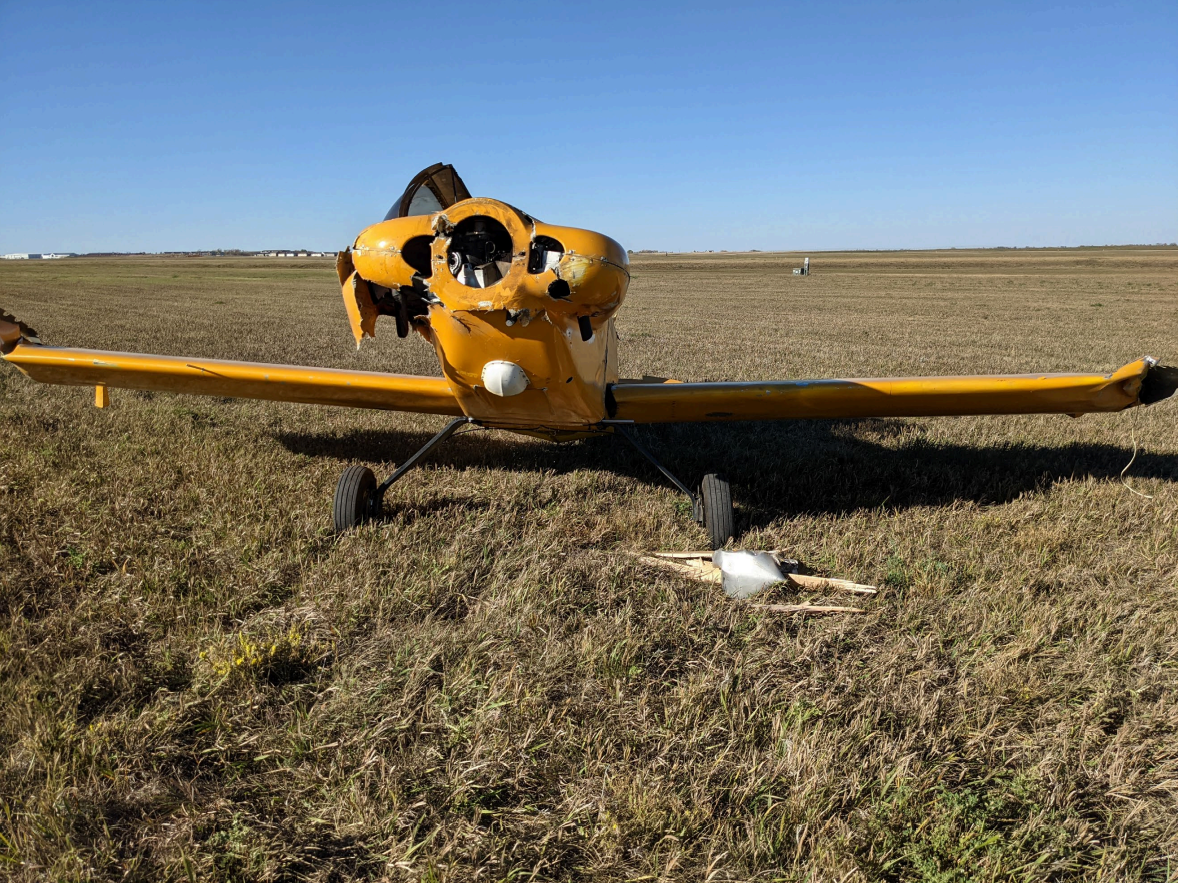
ASN Wikibase Occurrence # 309312
This information is added by users of ASN. Neither ASN nor the Flight Safety Foundation are responsible for the completeness or correctness of this information.
If you feel this information is incomplete or incorrect, you can submit corrected information.
| Date: | Sunday 3 October 2021 |
| Time: | 16:20 |
| Type: |  Monnett Sonerai II |
| Owner/operator: | Private |
| Registration: | N9115Y |
| MSN: | 01204 |
| Year of manufacture: | 1995 |
| Total airframe hrs: | 25 hours |
| Engine model: | Volkswagon 2175CC |
| Fatalities: | Fatalities: 0 / Occupants: 1 |
| Aircraft damage: | Substantial |
| Category: | Accident |
| Location: | Minot International Airport, ND (MOT/KMOT) -
 United States of America United States of America
|
| Phase: | Approach |
| Nature: | Private |
| Departure airport: | Minot International Airport, ND (MOT/KMOT) |
| Minot International Airport, ND (MOT/KMOT) | |
| Investigating agency: | NTSB |
| Confidence Rating: |
On October 3, 2021, about 1620 central daylight time, a Soneral L2 airplane, N9115Y, sustained substantial damage when it was involved in an accident near Minot, North Dakota. The pilot sustained minor injuries. The flight was conducted under the provisions of Title14 Code of Federal Regulations Part 91.
The pilot prepared for his first flight in the recently acquired airplane, taxied to the runway, and took off. As the airplane climbed into the traffic pattern, the pilot noticed that the engine temperature was high, just under redline. He reduced engine power and the temperature came back to normal. On final approach, he decided that the approach was not as stable as he would have liked so he decided to execute a go-around. During the go-around, the engine did not seem to have to have much power, and the pilot saw what appeared to be engine oil on the windscreen which obscured his visibility. The pilot decided to land the airplane as soon as possible and executed an abbreviated approach. Just before touchdown on the runway, the airplane stalled and bounced on the runway. The airplane veered off the runway, resulting to structural damage to the forward part of the fuselage and empennage.
Examination of the airplane and engine did not reveal any anomalies that could have contributed to the reported partial loss of engine power; however, there was a film of oil on the engine cowl and canopy, which would have obscured the pilot’s forward visibility.
It was the pilot’s first flight in the airplane, and he was not familiar with its characteristics and performance. It is likely that, while executing an abbreviated approach, the pilot failed to maintain the proper airspeed, which resulted in the exceedance of the airplane’s critical angle of attack and the airplane experiencing an aerodynamic stall and subsequent hard landing.
Probable Cause: The pilot’s failure to maintain proper airspeed and exceedance of the airplane’s critical angle of attack on final landing approach, which resulted in an aerodynamic stall and hard landing. Contributing to the accident was the pilot’s inexperience with the airplane’s performance, and an oil film on the canopy that obscured the pilot’s visibility.
Accident investigation:
 |
|
Sources:
NTSB
Location
Images:

Photo: NTSB
Revision history:
| Date/time | Contributor | Updates |
|---|
Corrections or additions? ... Edit this accident description
The Aviation Safety Network is an exclusive service provided by:


 ©2024 Flight Safety Foundation
©2024 Flight Safety Foundation